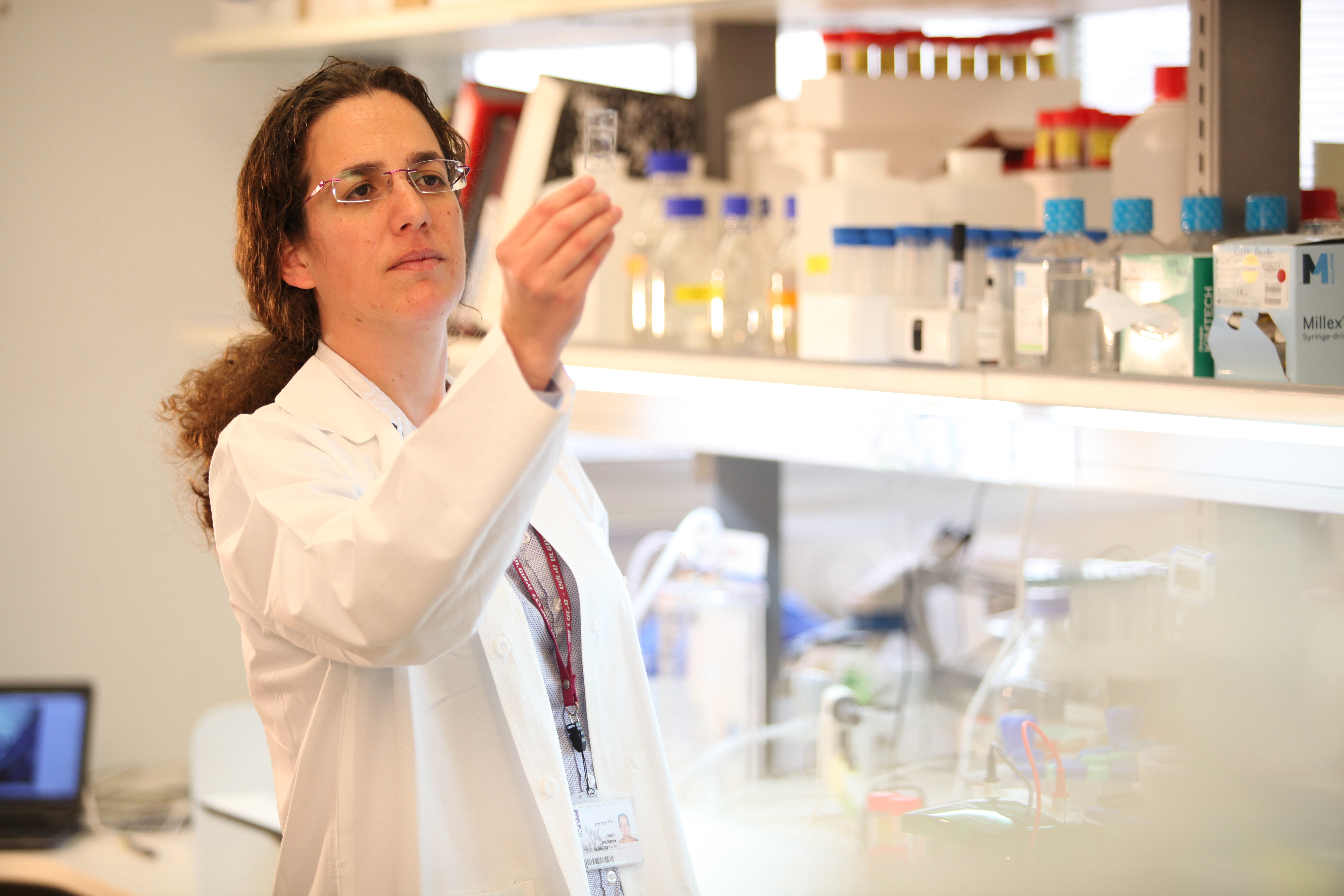

Ovarian cancer is a deadly disease, mostly because it is often diagnosed in a late stage, when the disease has spread and metastasized. At such a late stage, although treatment may initially be successful, in most cases the disease eventually returns and the patients succumb to their illness. For many years, the late stage diagnosis of this wide-spread disease has hampered the understanding of where ovarian cancer actually originates. Over the past decade an understanding emerged, that the most common subtype of ovarian cancer, high grade serous carcinoma, in many cases actually starts from the fallopian tube rather than from the ovary.
This understanding has revolutionized our thinking about ovarian cancer and opened many avenues of research, prevention, and potential treatments. The Ruth Perets Lab has played a significant role in this revolution by making the first mouse model of ovarian cancer which originates in the fallopian tube. This mouse model proves that ovarian cancer can indeed originate from the fallopian tube and serves as the first animal model of high grade serous carcinoma where the disease develops in the same way that the human disease develops. The scientists in the Perets lab in Rambam Health Care Campus plan to exploit this finding towards ovarian cancer prevention and treatment.
Understanding that ovarian cancer starts from the fallopian tube has brought to the lab’s attention the protein PAX8. PAX8 is essential for fallopian tube development during embryonic life, and it can be found in the adult fallopian tube and in nearly 100% of “ovarian” cancers.
The Perets lab studies the role of PAX8 in ovarian cancer and has preliminary results showing that this protein is essential in ovarian cancer progression – if PAX8 is removed from the tumor or its activity blocked, ovarian cancer cells die.
With the support of the Naomi Foundation, the Perets lab continues to study the role of PAX8 in ovarian cancer in order to understand its mechanism of action and show that inhibiting PAX8 can be a potential ovarian cancer drug. This work exploits the novel understanding of the origin of ovarian cancer from the fallopian tube, towards ovarian cancer prevention and potential treatment.

